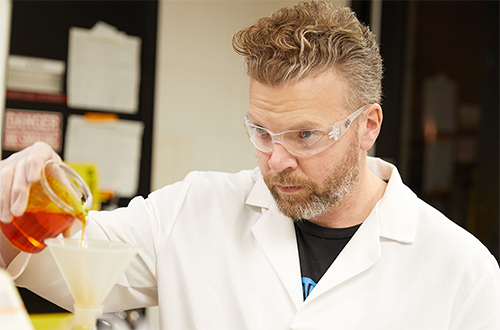

USGS scientist takes aim at Great Lakes invaders
Rising Higher: A Research Lab Built from the Ground Up - Part 2
Great Lakes Researchers Go Down Under
Rising Higher: A Research Lab Built from the Ground Up - Part 1
A Monograph on Ciscoes of the Laurentian Great Lakes and Lake Nipigon
WATCH: Acoustic Telemetry Provides In-Depth Look into Fish Behavior
Eel-Ladder Style Traps: A New Lamprey Control Tool
A Lampricide Treatment: Up-Close
Lamprey Nativeness Claims Annulled by Commission's Eshenroder
A Population at the Edge: American Eel Declining at the Extremes
Celebrating 60 Years of Successful Sea Lamprey Control, Science, and Cross-Border Collaboration!
Great Lakes Scientists Use Acoustic Telemetry to Reveal the Secret Lives of Fish
Hammond Bay Biological Station: The Nexus for Research and Restoration on the Great Lakes
Big Consequences of Small Invaders
New Sea Lamprey Estimates Suggest a Dramatically Decreased Population
Conducting Research through Cooperative Partnerships: The PERM Agreement
Living on the Edge: A Closer Look at Coastal Communities
Asian Carp: The War Isn't Over
Managing the Lake Huron Fishery
Understanding Sea Lamprey: Mapping the Genome and Identifying Pheromones

USGS scientist takes aim at Great Lakes invaders
Nick Schloesser, a recent University of Wisconsin-La Crosse graduate who is also a U.S. Geological Survey biologist, is adding to the body of knowledge to protect the world’s largest collective body of fresh water from the bitter bite of the lamprey. He shared his finds related to using Environmental DNA monitoring to help control populations of lamprey

Rising Higher: A Research Lab Built from the Ground Up - Part 2
A state-of-the-art invasive species laboratory is being built on the shores of Lake Huron at the United States Geological Survey Hammond Bay Biological Station (USGS HBBS). The biological station is one of seven field stations of the USGS Great Lakes Science Center, and is operated via a decades-long partnership with the Great Lakes Fishery Commission.

Great Lakes Researchers Go Down Under
Movement studies of Great Lakes fishes were a featured topic at the 4th International Conference on Fish Telemetry in Cairns, Australia, this past summer. The conference included presentations by researchers tracking marine and freshwater fishes worldwide using a variety of telemetry technologies.

Rising Higher: A Research Lab Built from the Ground Up
A state-of-the-art invasive species laboratory is being built on the shores of Lake Huron at the USGS HBBS. The biological station is one of seven field stations of the USGS Great Lakes Science Center, and is operated via a decades-long partnership with the Great Lakes Fishery Commission.



